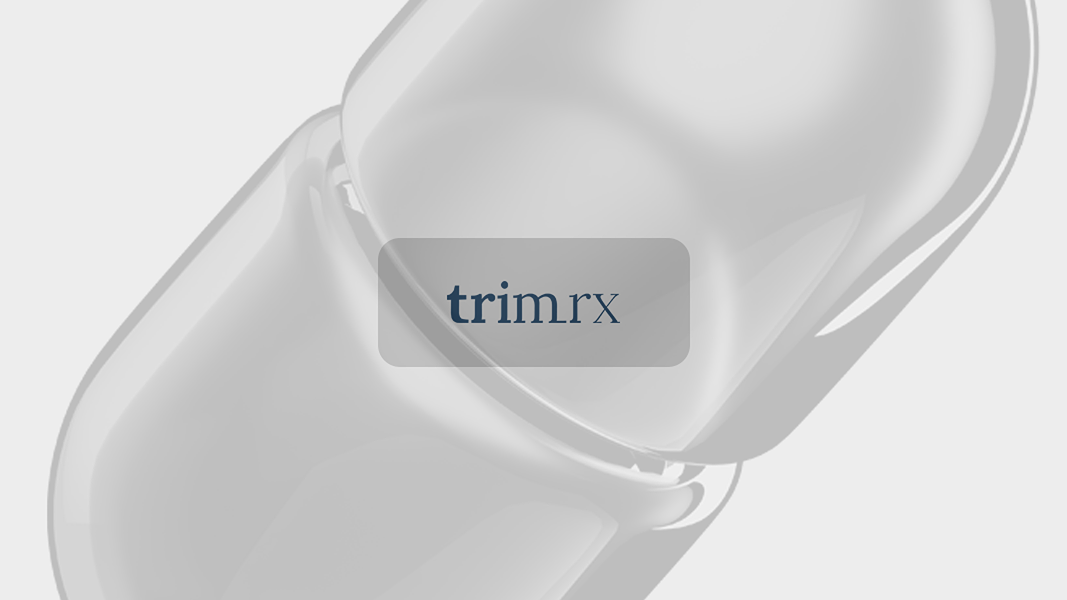How to Eat Tuna for Weight Loss: A Comprehensive Guide

Introduction
Have you ever found yourself rummaging through the pantry, searching for a quick meal option that is both nutritious and weight-loss-friendly? For many of us, canned tuna often springs to mind as a convenient choice. Surprisingly versatile, tuna is not just a staple in our kitchens but also a powerhouse when it comes to nutrition. From salads to sandwiches, tuna can be a delicious foundation for various meals that support our weight loss goals.
In this blog post, we will explore how to eat tuna for weight loss effectively. We will delve into its nutritional benefits, practical ways to incorporate it into your diet, and some delicious recipes that are easy to whip up. Additionally, we will discuss the potential pitfalls of overconsumption and how to make informed choices about tuna varieties. By the end of this article, you’ll have a well-rounded understanding of how to use tuna as a powerful ally in your weight loss journey.
Our journey will cover the following key areas:
- Nutritional benefits of tuna
- How tuna promotes weight loss
- Different types of tuna and their impact on health
- Creative recipes to enjoy tuna
- Addressing potential concerns and safety tips
Let’s embark on this journey together and discover how we can leverage the benefits of tuna for effective weight management.
Nutritional Benefits of Tuna
Tuna is a nutrient-dense food, making it a fantastic option for those looking to lose weight while maintaining a balanced diet. Here are some of the key nutritional components of tuna that can help you achieve your weight loss goals:
High Protein Content
One of the most significant benefits of tuna is its high protein content. A typical 100-gram serving of tuna can provide around 30 grams of protein, which is essential for muscle repair and growth. Protein is also known for its satiating effect, helping you feel full longer and reducing the likelihood of overeating. This means incorporating tuna into your meals may help curb those mid-afternoon snack cravings.
Low Caloric Count
Tuna is relatively low in calories, making it an ideal food for weight loss. A serving of tuna generally contains about 100-150 calories. By adding tuna to your meals, you can create satisfying dishes without exceeding your daily caloric intake. This makes it easy to stick to a calorie-controlled diet without feeling deprived.
Healthy Fats
Tuna, particularly varieties like albacore, is rich in omega-3 fatty acids. These healthy fats are known to support heart health, reduce inflammation, and may even aid in weight management. Omega-3s can help regulate appetite and promote a feeling of fullness, making them a valuable addition to your weight loss strategy.
Essential Vitamins and Minerals
Tuna is packed with essential vitamins and minerals, including vitamin D, selenium, and B vitamins. Vitamin D is vital for bone health and may play a role in fat metabolism. Selenium is an antioxidant that helps protect cells from damage, while B vitamins are crucial for energy production.
Summary
Incorporating tuna into your diet can provide a host of nutritional benefits that support weight loss. With its high protein content, low calorie count, healthy fats, and essential nutrients, tuna is a smart choice for anyone looking to shed pounds or maintain a healthy weight.
How Tuna Promotes Weight Loss
Now that we understand the nutritional benefits of tuna, let’s explore how it can specifically aid in weight loss:
Promotes Satiety
The high protein content in tuna helps you feel full longer, which can lead to reduced overall calorie intake. When you choose protein-rich foods like tuna, you are likely to eat fewer calories during the day, making weight loss more achievable.
Boosts Metabolism
Tuna’s nutrient profile can have a positive impact on your metabolism. The combination of protein and omega-3 fatty acids may enhance your body’s ability to burn calories efficiently. A faster metabolism means your body can burn more calories, even at rest.
Supports Muscle Maintenance
Maintaining muscle mass is crucial during weight loss. Tuna is an excellent source of protein, which is essential for muscle repair and growth. Including tuna in your diet can help preserve muscle mass while losing fat, ensuring you remain strong and healthy.
Reduces Cravings
Protein-rich foods like tuna can help regulate hunger hormones, reducing cravings and the desire to snack between meals. This can be especially beneficial for those trying to avoid unhealthy snacking, which often contributes to weight gain.
Summary
By promoting satiety, boosting metabolism, supporting muscle maintenance, and reducing cravings, tuna can be a powerful ally in your weight loss journey. It allows you to create satisfying meals while keeping your calorie count in check.
Different Types of Tuna and Their Impact on Health
Not all tuna is created equal. Understanding the differences between various types of tuna can help you make better dietary choices:
Canned Tuna vs. Fresh Tuna
Canned tuna is a convenient and affordable option, while fresh tuna can be higher in quality and taste. Both versions provide similar nutritional benefits, but it’s essential to choose the right preparation method. For weight loss, opt for tuna packed in water rather than oil to keep the calorie count low.
Light Tuna vs. Albacore Tuna
Light tuna, typically made from skipjack, is lower in mercury and calories compared to albacore tuna (white tuna). While both types are nutritious, light tuna is often the better choice for those concerned about mercury exposure and calorie intake.
Mercury Levels
One important consideration when consuming tuna is its mercury content. Certain varieties, such as bigeye and albacore, contain higher levels of mercury, which can be harmful if consumed excessively. The FDA recommends limiting intake of these types of tuna, especially for pregnant women and children. Instead, opt for lower mercury options like light tuna.
Summary
When incorporating tuna into your weight loss diet, choose low-mercury varieties, and consider how you prepare it. This will help maximize its health benefits while minimizing potential risks.
Creative Recipes to Enjoy Tuna
Now that we’ve explored the nutritional benefits and types of tuna, let’s look at some creative and delicious recipes that make incorporating tuna into your meals easy and enjoyable.
Tuna Salad with Greek Yogurt
Instead of using mayonnaise, try making a tuna salad with Greek yogurt for added protein and creaminess. Mix canned tuna with Greek yogurt, diced celery, chopped onions, and a squeeze of lemon juice for a refreshing and healthy salad. Serve it on whole grain bread or with lettuce wraps.
Tuna and Avocado Toast
This simple yet nutritious dish combines the healthy fats of avocado with the protein of tuna. Mash half an avocado on a slice of whole-grain toast and top it with canned tuna, a sprinkle of salt, pepper, and your favorite hot sauce for a flavorful meal.
Tuna Pasta Salad
For a quick meal, combine whole wheat pasta with canned tuna, cherry tomatoes, olives, and a drizzle of olive oil. This dish is not only filling but also rich in nutrients, making it perfect for lunch or dinner.
Spicy Tuna Poke Bowl
Create a delicious poke bowl by combining diced raw or seared tuna with brown rice, sliced cucumbers, avocado, and a sprinkle of sesame seeds. This dish is packed with protein and healthy fats, making it a perfect choice for a balanced meal.
Tuna Stuffed Bell Peppers
For a fun twist, consider making stuffed bell peppers filled with a mixture of canned tuna, quinoa, diced tomatoes, and spices. Bake until the peppers are tender for a colorful and nutritious meal.
Summary
These recipes highlight the versatility of tuna, allowing you to enjoy its nutritional benefits in a variety of delicious ways. By integrating these dishes into your meal planning, you can make weight loss both enjoyable and achievable.
Addressing Potential Concerns and Safety Tips
While tuna can be an excellent addition to your weight loss diet, there are some potential downsides to consider, particularly regarding mercury exposure and dietary balance.
Mercury Exposure
As mentioned earlier, certain types of tuna contain higher levels of mercury. It is crucial to limit your intake of high-mercury tuna like albacore and bigeye. The FDA recommends consuming no more than 6 ounces of these types of tuna per week, especially for vulnerable populations like pregnant women and children.
Balanced Diet
Relying solely on tuna for weight loss can lead to nutrient deficiencies. It’s essential to incorporate a variety of protein sources and other food groups into your diet. A well-rounded meal plan that includes fruits, vegetables, whole grains, and healthy fats will provide the necessary nutrients for optimal health.
Preparing Tuna Safely
When preparing tuna, particularly fresh tuna, ensure you handle it safely to avoid foodborne illnesses. Always store fresh tuna in the refrigerator and consume it within a couple of days. Canned tuna should be stored in a cool, dry place and consumed before the expiration date.
Summary
To maximize the benefits of tuna while minimizing potential risks, choose low-mercury varieties, incorporate a variety of foods in your diet, and practice safe handling methods. This approach will support your weight loss goals while ensuring you maintain a healthy and balanced diet.
Conclusion
Tuna is a highly nutritious food that can play a significant role in your weight loss journey. With its high protein content, low calorie count, and essential nutrients, it’s an excellent option for creating satisfying meals. By incorporating a variety of tuna recipes into your diet and being mindful of mercury levels, you can enjoy its benefits while working towards your weight loss goals.
So, as you continue on your health journey, consider adding tuna to your meal plan. From salads to sushi bowls, the possibilities are endless, and the nutritional benefits are undeniable. Together, let’s embrace a healthier lifestyle and make informed choices that support our weight management efforts.
Frequently Asked Questions
Is tuna a good option for weight loss?
Yes, tuna is a great option for weight loss because it is low in calories and high in protein, helping you feel full and satisfied.
How often should I eat tuna to help with weight loss?
Eating tuna 2-3 times a week can be beneficial for weight loss, providing a good balance of nutrients without overloading on calories.
Is canned tuna as healthy as fresh tuna for weight loss?
Canned tuna can be a healthy option if you choose varieties packed in water or their own juices rather than oil. Check the labels for low sodium and no added preservatives.
Can eating too much tuna be harmful?
Yes, eating too much tuna can be harmful due to its mercury content. It’s important to balance tuna with other types of fish and protein sources to avoid mercury exposure.
What are some healthy ways to prepare tuna for weight loss?
Healthy ways to prepare tuna include grilling, baking, or making a tuna salad with yogurt instead of mayo. Avoid frying or adding heavy sauces to keep the calorie count low.
Are there any types of tuna I should avoid for weight loss?
Yes, it’s best to avoid types of tuna that are higher in mercury, like bigeye and albacore. Light tuna generally has lower mercury levels and is safer for regular consumption.

Transforming Lives, One Step at a Time
Keep reading
Can I Eat Idli for Weight Loss?
Wondering if you can eat idli for weight loss? Discover its benefits, nutritional profile, and perfect pairings for a healthy diet!
Can We Eat Dark Chocolate in Weight Loss? Exploring the Facts
Wondering can we eat dark chocolate in weight loss? Discover how to enjoy this treat while staying on track with your diet. Learn more now!
Is Not Eating Breakfast Good for Weight Loss?
Wondering if not eating breakfast is good for weight loss? Discover the latest research and tips for a healthier approach to your diet!
Can I Eat Peanut Butter During Weight Loss? Exploring the Benefits and Best Practices
Wondering, ‘can I eat peanut butter during weight loss?’ Discover how to enjoy this creamy treat while reaching your goals. Learn more!
Can We Eat Curd During Weight Loss?
Wondering if we can eat curd during weight loss? Discover its benefits, how to incorporate it into your diet, and debunk common myths!
Does Walking After Eating Help with Weight Loss?
Discover how walking after eating helps with weight loss! Learn its benefits for digestion and blood sugar control. Start your journey today!
Can I Eat Bread for Weight Loss? Debunking the Myths and Exploring the Benefits
Wondering if you can eat bread for weight loss? Discover how to incorporate healthy bread into your diet while achieving your weight loss goals!
Does Eating Fruit Help with Weight Loss? Exploring the Sweet Science
Discover how eating fruit helps with weight loss. Learn the benefits, top fruits, and tips to boost your health journey today!
How to Eat Chana for Weight Loss: A Comprehensive Guide
Discover how to eat chana for weight loss with practical tips, delicious recipes, and nutritional insights. Start your journey to better health today!






